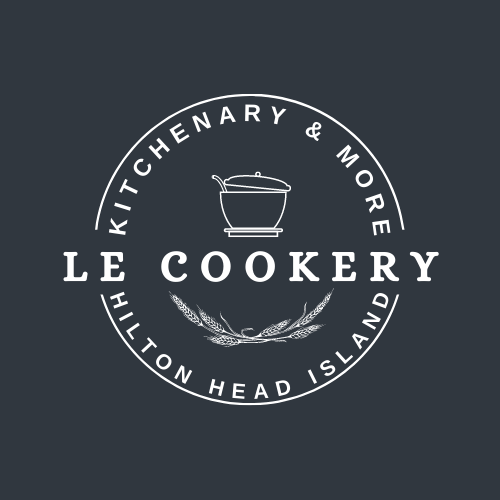Cookware
Gluten-Free 101 with Chef Kendra Peterson
What is gluten intolerance?
What foods contain gluten? (Including sneaky, hidden sources of gluten.)
Can food still taste good – without gluten?
Chef Kendra Peterson, who lives with gluten intolerance herself, is the owner of Chicago-based Drizzle Kitchen and demonstrates gluten-free cooking for Swiss Diamond, the only cookware recommended by the American Vegetarian Association and designed for allergy-free cooking.
Please note: While Chef Kendra has a degree in Food Science and Nutrition, she is not a medical professional. This interview is for informational purposes only. Discuss any potential health concerns with a licensed physician.
Q&A with Chef Kendra
See more helpful videos from Le Cookery USA on our YouTube channel.
Q: We’re talking about cooking gluten-free. First of all, for those who hear that a lot and aren’t really sure what it means, just explain what that means.
A: So there’s two things that can be an issue. You can either have Celiac disease, which is an autoimmune disease, where you actually have serious internal damage from eating gluten, which is a protein found in wheat. Or, you can have a gluten sensitivity – some people hear gluten intolerance, it’s the same thing. With a gluten sensitivity you can have the same symptoms, it can feel just as bad for that person, but you don’t have the internal damage to your G.I. tract.

Q: So explain the difference between somebody who might have a peanut allergy or be allergic to a food, versus somebody who has Celiac, who has a problem digesting gluten.
A: Sure, sure. So with Celiac disease, what actually happens is the little fingers called villi that line your intestines go flat. Those are really important for so many functions; there’s different vitamins that are processed in there, it’s what moves your food through your body basically.
So you don’t necessarily have the throat closing like you do with a peanut allergy. You don’t always have the swelling of the eyes, the puffy lips – you know, you see the “fish lips” on people who eat seafood. You don’t have that very recognizable sort of factor. So a lot of people don’t really believe it’s an allergy, because it’s all internal. You might not feel it for 12-24 hours. The problem [with gluten intolerance] is it can be 200 different ways that [allergy] shows up. You can get a rash, you can get a stomachache, you can get migraines. There’s 200 symptoms basically.
Q: What else do you find gluten in, besides [bread and] wheat pasta?
A: That’s a great question. Rye, barley and oats. There are certified gluten-free oats, but the challenge is most people who have one allergy often have another allergy that goes along with it. Chips can often have sneaky wheat in there; cereals too, it’s really important to read the ingredients. And they use gluten quite a bit as a stabilizer in a lot of shelf-ready products, so just like when we were hearing about soy, how there’s soy protein in everything and it’s used to thicken things and stabilize [them], it’s kind of the same way that now gluten is infiltrating products that you’d never think it would be in. It’s kind of hidden. Beer would be a common one that most people don’t know. If you have Celiac, you even have to look at things like lipstick and lotion – you have to really look at exactly where you’re finding that wheat, because it shows up in crazy places.

Q: What about gluten-free food labeling?
A: It can be hard to understand, if something says “gluten free,” or “free of gluten,” or “not processed with gluten” – it depends how sensitive you are. If you have Celiac disease, it’s really important to probably get things that are verified gluten-free, really just to avoid [problems]. (Learn more about gluten-free food labeling from About.com.)
Some products, they will tell you there’s no gluten in them [in the ingredients list], but they are made on the exact same [manufacturing] line as products that have wheat. So even though they’re potato chips, and say they are void of gluten…

Q: You mentioned “they are made on the same [manufacturing] line.” So gluten can be transferred, it doesn’t have to be baked into a product.
A: Exactly, exactly. It can be – and here’s an interesting one that most people don’t think about: ovens. If you have a convection oven, it can literally blow flour around and [the flour] can land on your food. A convection oven can cause cross-contamination.
Q: So what are your gluten-free pantry staples?
A: I find I use more brown rice flour than any other flour in my pantry. It’s also one of the flours I put in my flour mix when I bake. It’s pretty inexpensive, and because you can get brown rice flour, it has a little bit of fiber in it. If you don’t have a nut [allergy], I find that almond flour is amazing. It lends a lot of moisture to whatever you’re baking. It’s really, really great in quick breads, baked goods… But again, the important thing with baking gluten-free is that you need to have a blend of flours. You can’t just substitute brown rice flour, you can’t just substitute almond flour [cup-for-cup for wheat flour]. You need to have a blend – get a recipe – and you need to have a starch in there. So another good thing for the pantry would be tapioca starch or potato starch.
Q: What about for gluten-free cooking, as opposed to baking?
A: As you cook more and more while you’re gluten-free, you’ll realize the things that you use more often. Like rice and lentils – I use those all the time, so I always have those. And they’re easy, they’re quick. Quinoa – I love it. Fifteen minutes, one part quinoa to one-and-a-half parts water, in a pot like rice. Boom. Done.
Q: Okay, so you can show us how to make dishes without the gluten so that you can still enjoy great food. [Gluten intolerance] doesn’t mean you have to have bland food, right?
A: Absolutely, absolutely. The way that I cook for my clients in Chicago is using “real food.” I don’t make gluten-free pizza or gluten-free pasta – we use rice and lentils and beans and potatoes. Part of what I want to do is get people back to eating “real food” products and stop using the processed things. So even if you don’t have a gluten allergy, everything tastes great.
Chef Kendra’s recipe for Herbed Vegetable Frittata with Smoky Paprika Goat Cheese

Shop Swiss Diamond at Le Cookery USA here.
Image Credit(s): CLGF




 Like many businesses during these difficult times, we’ve had to temporarily close our store to help with social distancing…however, we are still serving our customers through many different ways including gift cards to help our employees, home deliveries and fun Daily Quarantine Care Packages!
Like many businesses during these difficult times, we’ve had to temporarily close our store to help with social distancing…however, we are still serving our customers through many different ways including gift cards to help our employees, home deliveries and fun Daily Quarantine Care Packages!